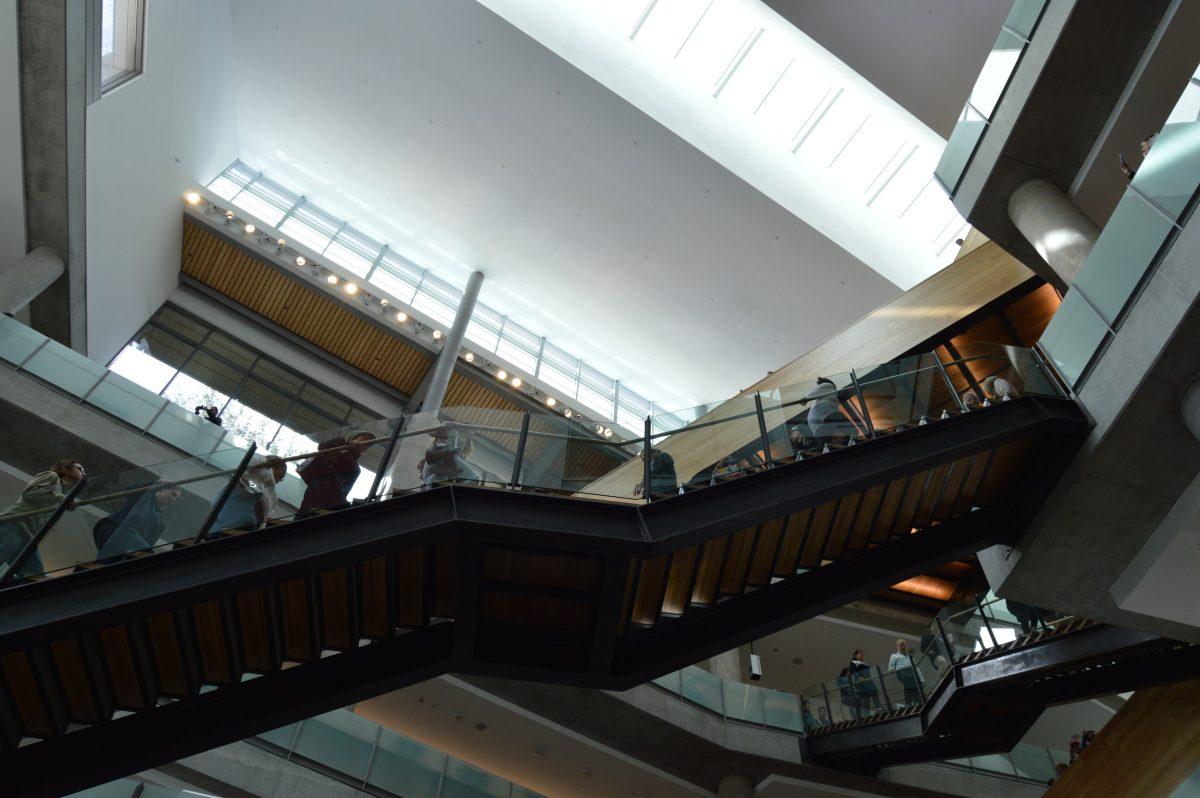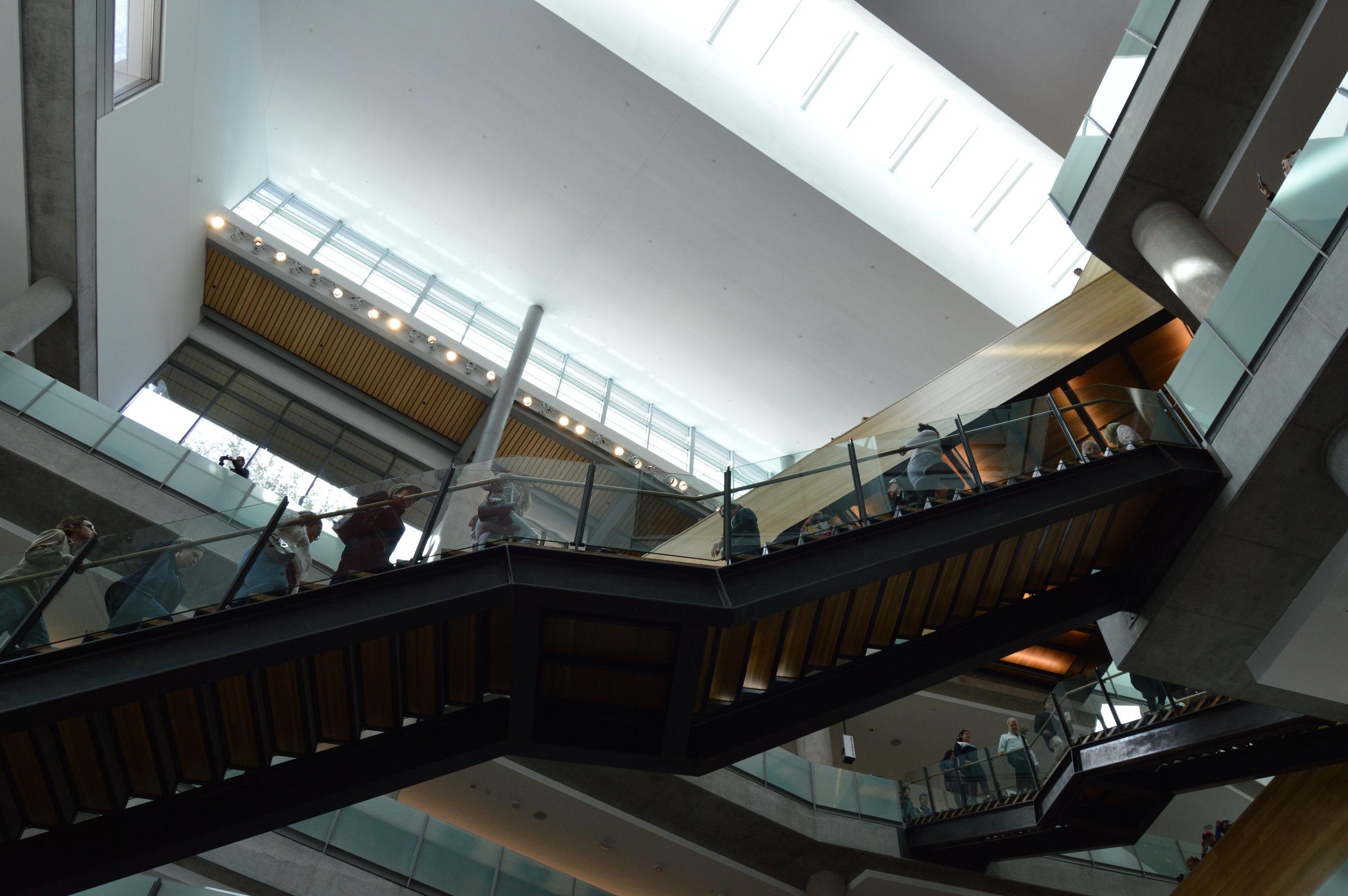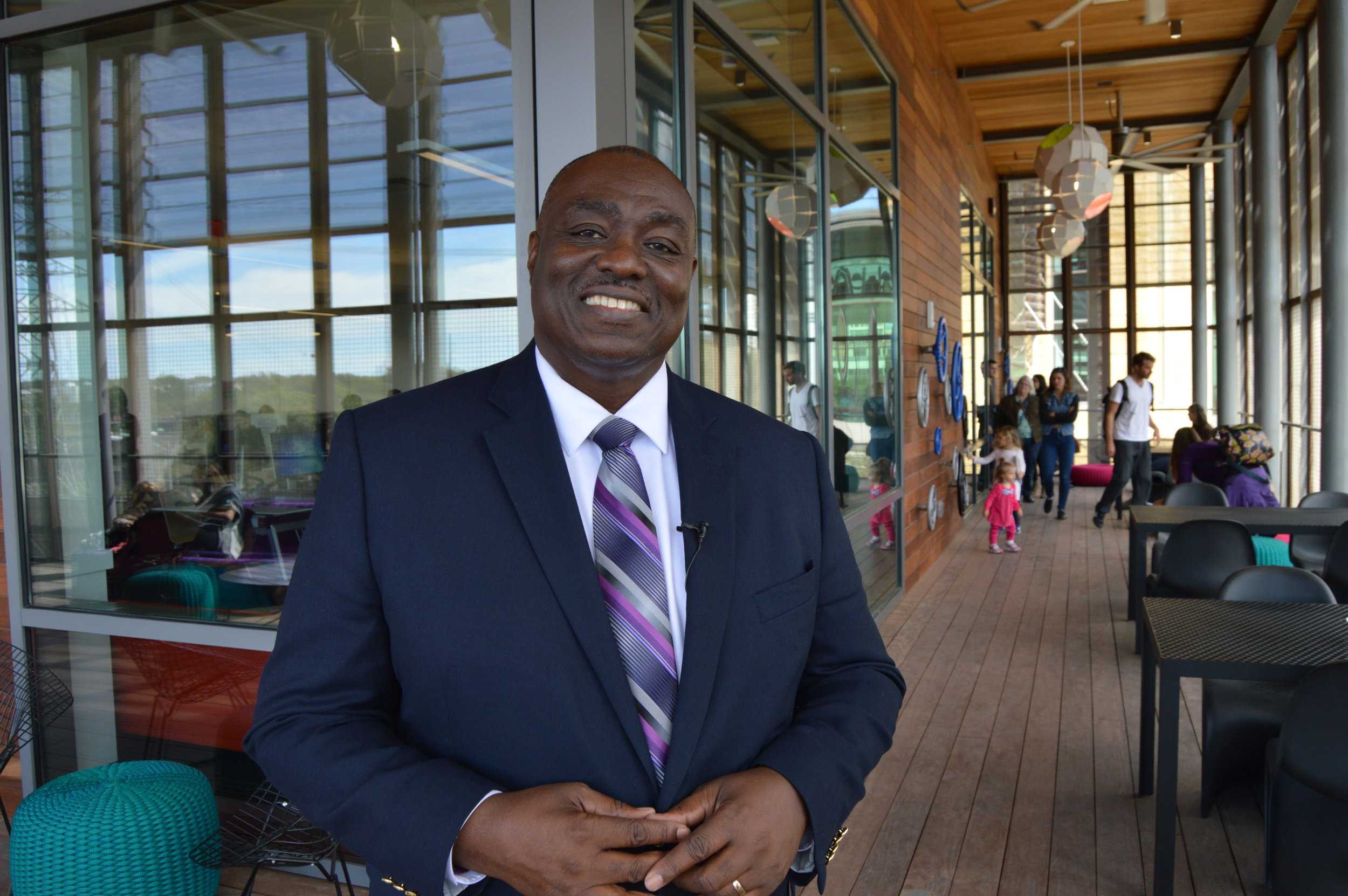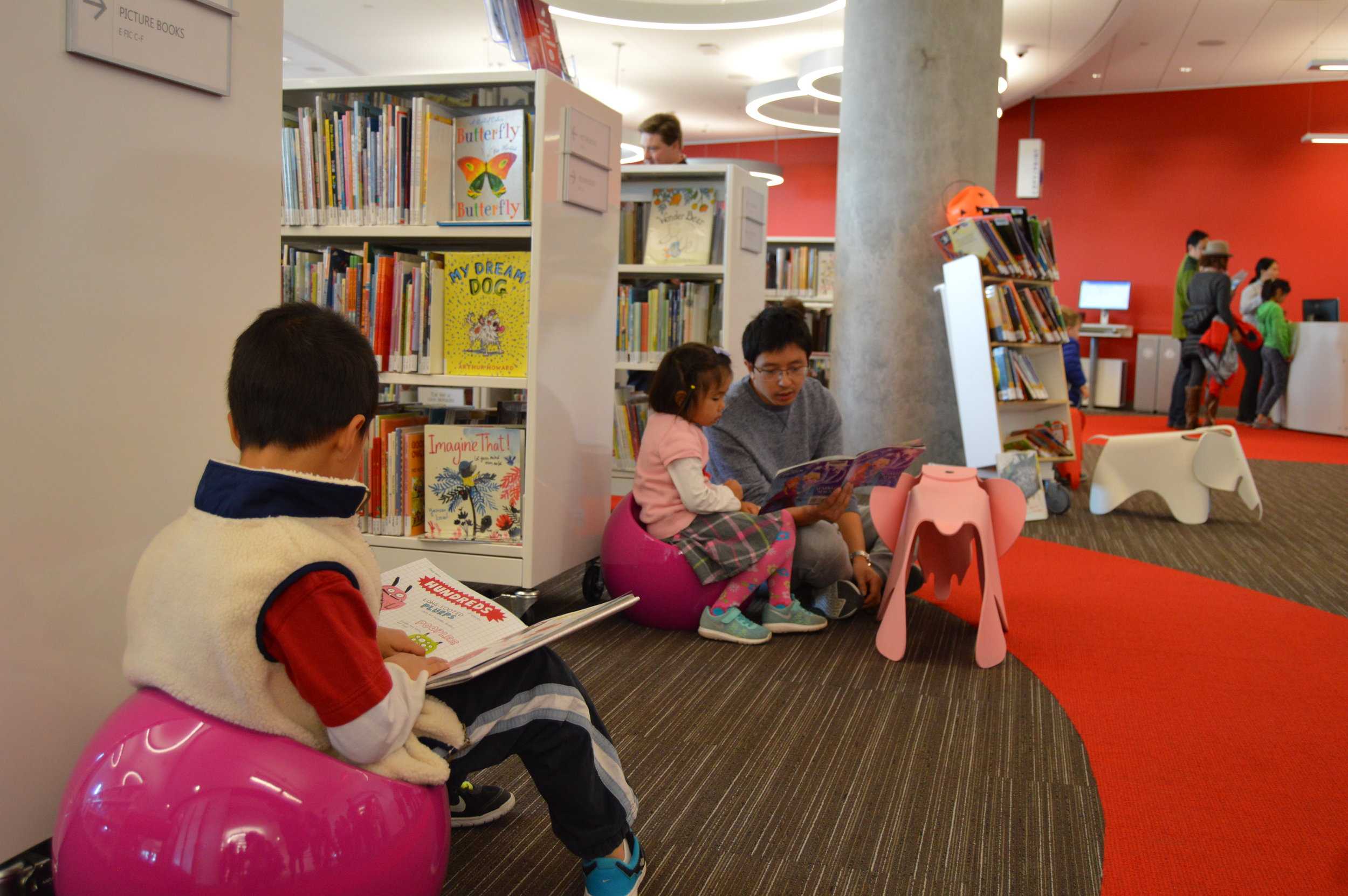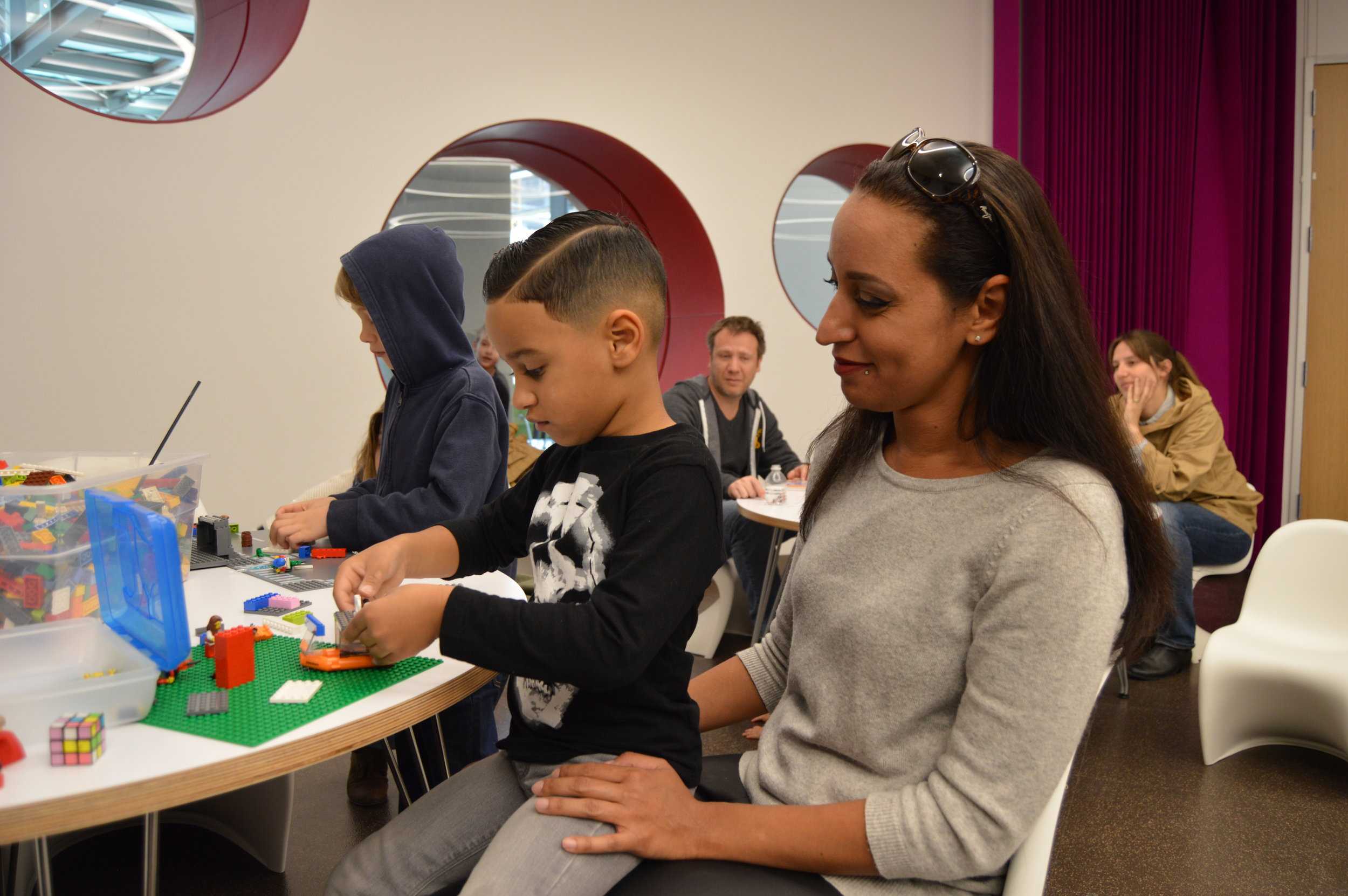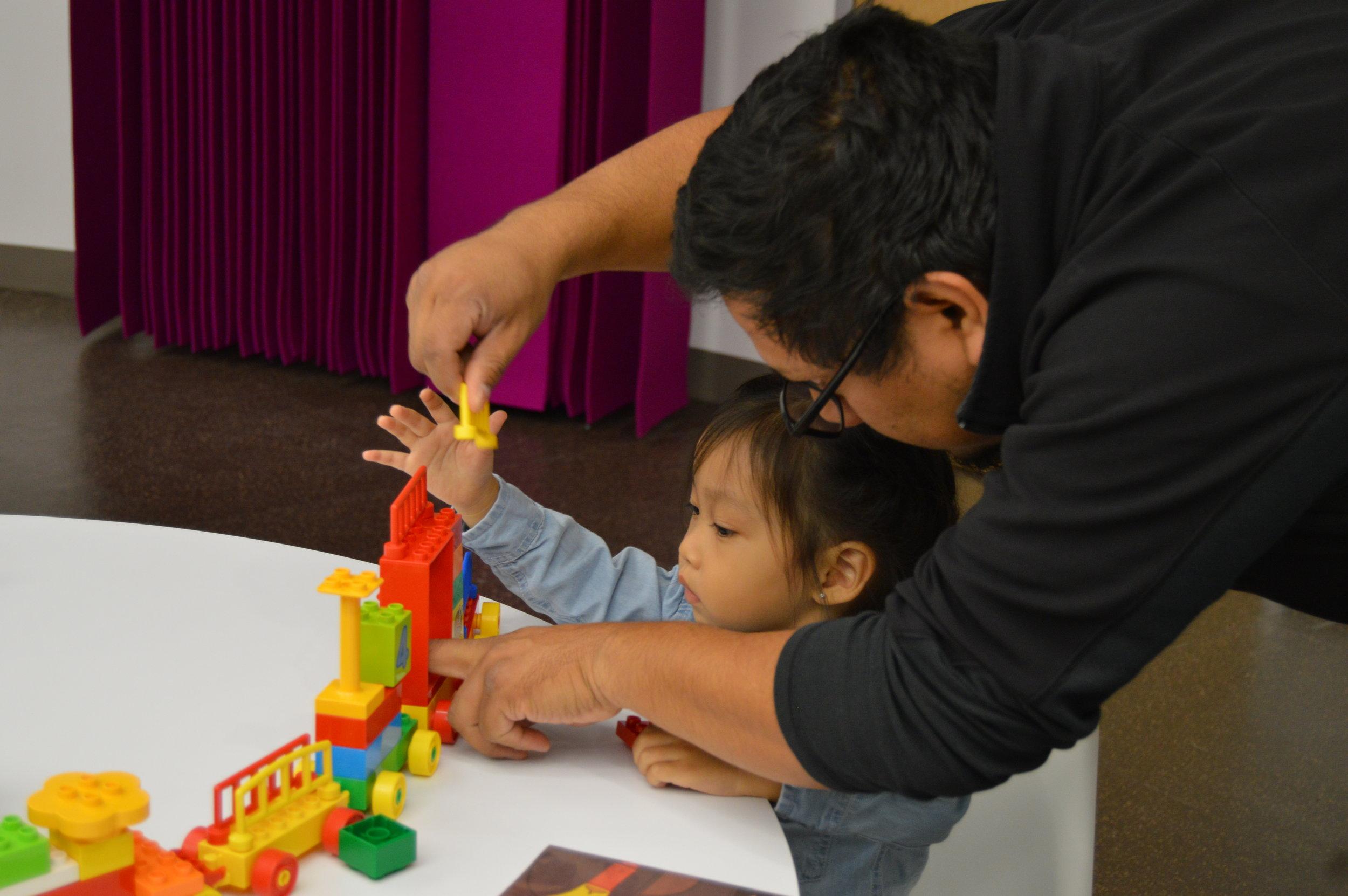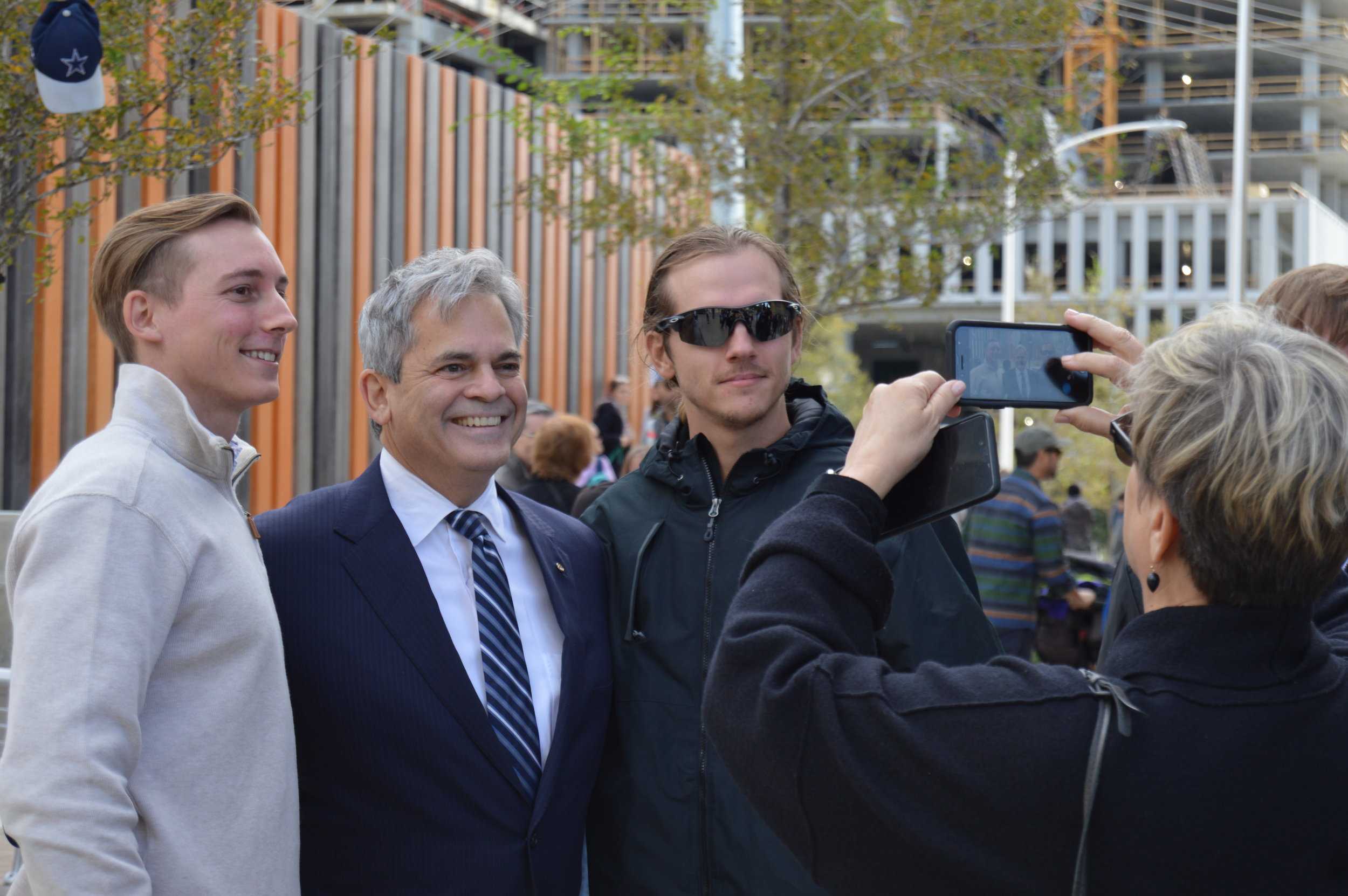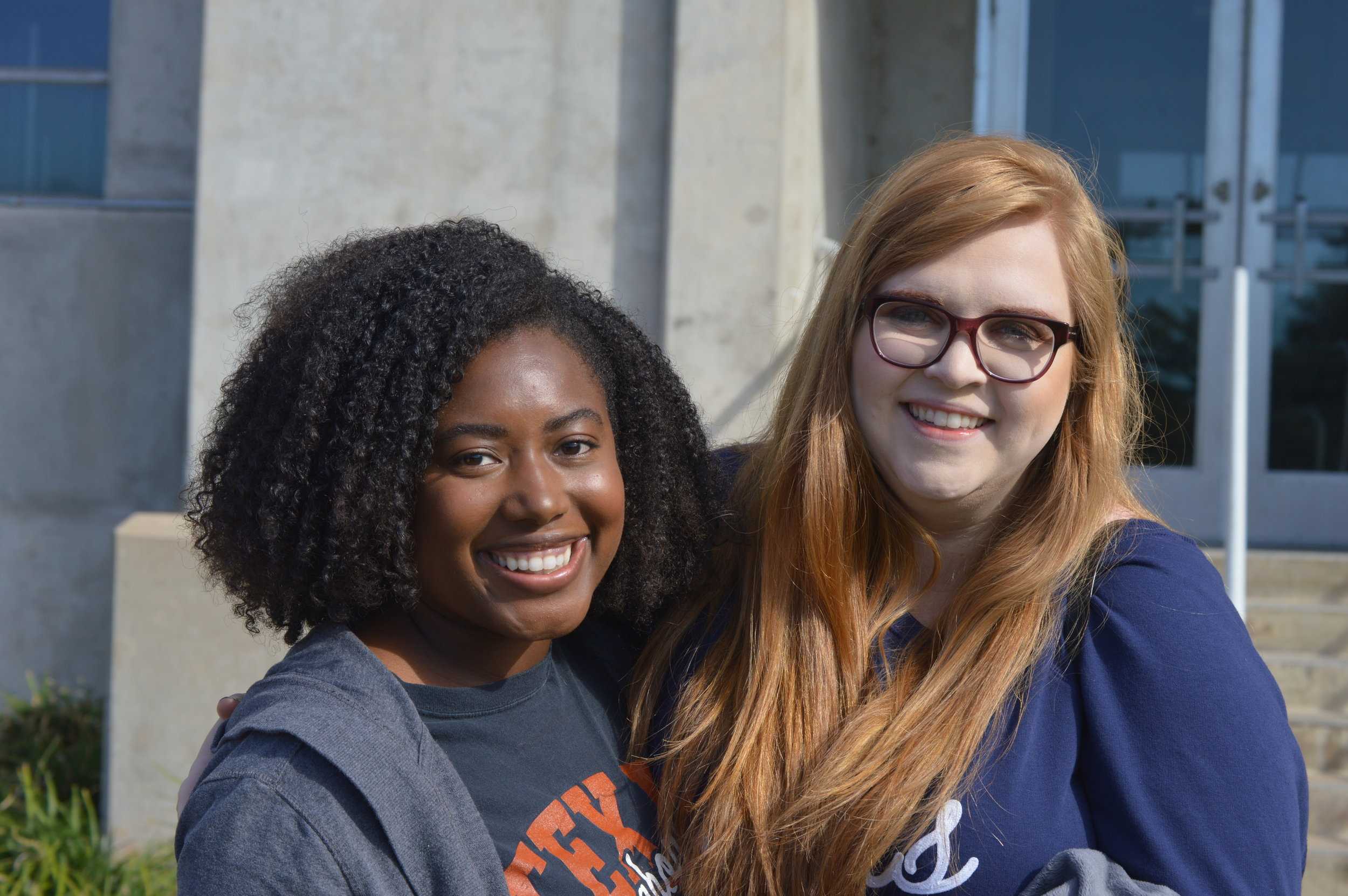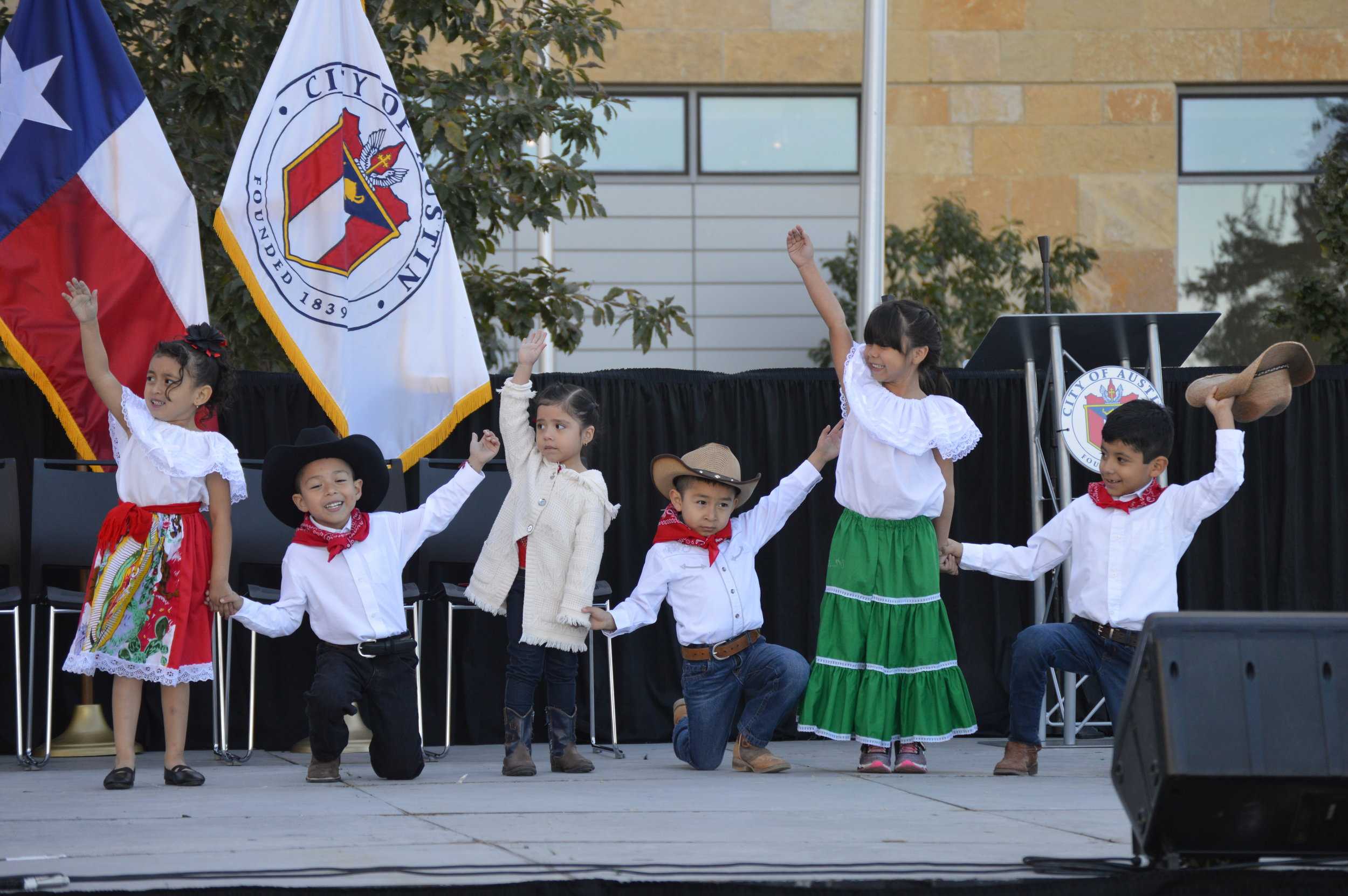The doors to the Austin Public Library opened to the public last Saturday, Oct. 28. Located on 710 W. Cesar Chavez Street, its contemporary, energy-efficient structure makes it unlike any other library in the city.
Story by Urub Khawaja
Photos by Alejandra Martinez
“Our central library is really embedded in the fabric of downtown,” Mayor Pro Tem Kathie Tovo says on stage at the Central Austin Public Library grand opening ceremony. “From its generous windows that allow you to look out on Lady Bird Lake and our iconic system to the windows that reflect the changing urban landscape around the library — you’re really in the midst of downtown here, and you don’t forget that when you’re in the library.”
The APL will be home to 350,000 books and a variety of amenities for the Austin community, such as a technology petting zoo, resume writing classes, kiosks to check out laptops and iPads, computer classes, 3-D printing, second language classes, workforce development training and many other programs.“The programs that will take place within the walls of our new central library will be rich and varied, and I hope that will provide a reason for everyone in our community to come through those doors at some point, regardless of where they live in the city,” Tovo says. “And while Austin’s new central library is a library of the future, it is also going to fulfill well the democratic mission that our public libraries have always long undertaken — of making information freely available to everyone in our community, regardless of where they live and regardless of background.”
There has been talk about the long-awaited library all across Austin for some time. The bond was passed in 1993 and the ground-breaking ceremony occurred five years ago. Tovo witnessed this excitement among people even at grocery stores and hair salons. Before the ribbon cutting ceremony, she compared the experience to “Charlie and the Chocolate Factory.” “I have to say I feel a little bit like Charlie during those moments before he walks through the gates and into the doors of Willy Wonka’s factory and encounters the wonder and magic of that place,” Tovo says. “Libraries have always been a special place in my life—I still remember at age five practicing my name in cursive over and over and over again, which was the requirement to get a library card in my town. It was my golden ticket to that world created beyond those doors, and so I feel really fortunate to live in a city like Austin which provides library access to people in their neighborhoods.”
There are six floors in the APL, all consisting of open spaces and floor-to-ceiling windows. The power bill for the APL is notably lower than the bills of other libraries in Austin because of its energy-efficient structure.The building also features a water reuse system and rain collection system. It is sustainably built with regional and recycled materials, which were used to honor Austin’s commitment to being an environmentally-conscious city. Because of this, the APL is the first library to achieve a LEED platinum certification, which is a globally recognized symbol of sustainability achievement. “This is the most energy-efficient library that has ever been imagined,” Mayor Steve Adler says. “This building has a platinum LEED rating. It is harder to get a platinum LEED rating on a building like this than it is to get into Franklin Barbecue.”
The library will be offering many programs to residents of the community, such as free tutoring for students of all grade levels. Sierra Alexander, grand opening attendee and first grade teacher, is looking forward to this resource, as she used it herself as a child and hopes for her students to utilize it as well. Laura Degelia, a first grade teacher who was attending the event with Alexander, noted that this library will be available for people of all backgrounds. “With the gentrification that’s happening in the city, I would say that the library would be helping with keeping diversity alive,” Degelia says. “I feel like a big reason why people wanted to come to Austin in the past is because it’s diverse, and everyone’s welcome here—it’s super welcoming and open. But now gentrification is rampant, and it’s sad.”
APL Director Roosevelt Weeks has been looking forward to this new addition to the community for years. Though he has been director for two months of the approximately ten-year process of creating the APL, he believes that the wait was truly worth it. “It is important to the community because it is a place where they can gather,” Weeks says. “It is a place that they’ve committed to, it’s a space that they built — in essence, because they’re the ones that voted for the bond to build the library and they’re the ones that voted to get the place and support the council members that supported the bond.”
The library will also be hosting storytelling for children. Richard Carr attended the grand opening with his nine-month old son, Samson, and he looks forward to taking his son to the readings since they regularly attend the Books and Babies program at the other library branches. When asked about why he prioritizes these programs, Carr says, “We don’t have a lot of other friends with little babies Samson’s age, and we’re kind of young. It’s also free, which is also great. It’s a free way to go to the library, which is one of my favorite places, and have him [Samson] meet other babies—so, it’s a win-win-win.”
A red 750-pound clock is mounted on the wall across the stair steps that cross open space. The clock runs on perpetual motion, and it was built by a family in Switzerland. The family typically builds clocks for cathedrals, and this was the first time they built one for a library. The clock is said to only require maintenance once every hundred years. Adler said to think of the library as a “municipal cathedral.” “And when that big red clock needs maintenance in a couple hundred years, what will the people of Austin think about this cathedral?” Adler says. “I like the idea of some future library director bragging about what famous book was written in this space, about an innovation that somebody thought of in this space, of a rift in the community that was healed there — that a community came together in this space. What we have done as a community is what generations will be talking about 50, 75 or 100 years from today.”































